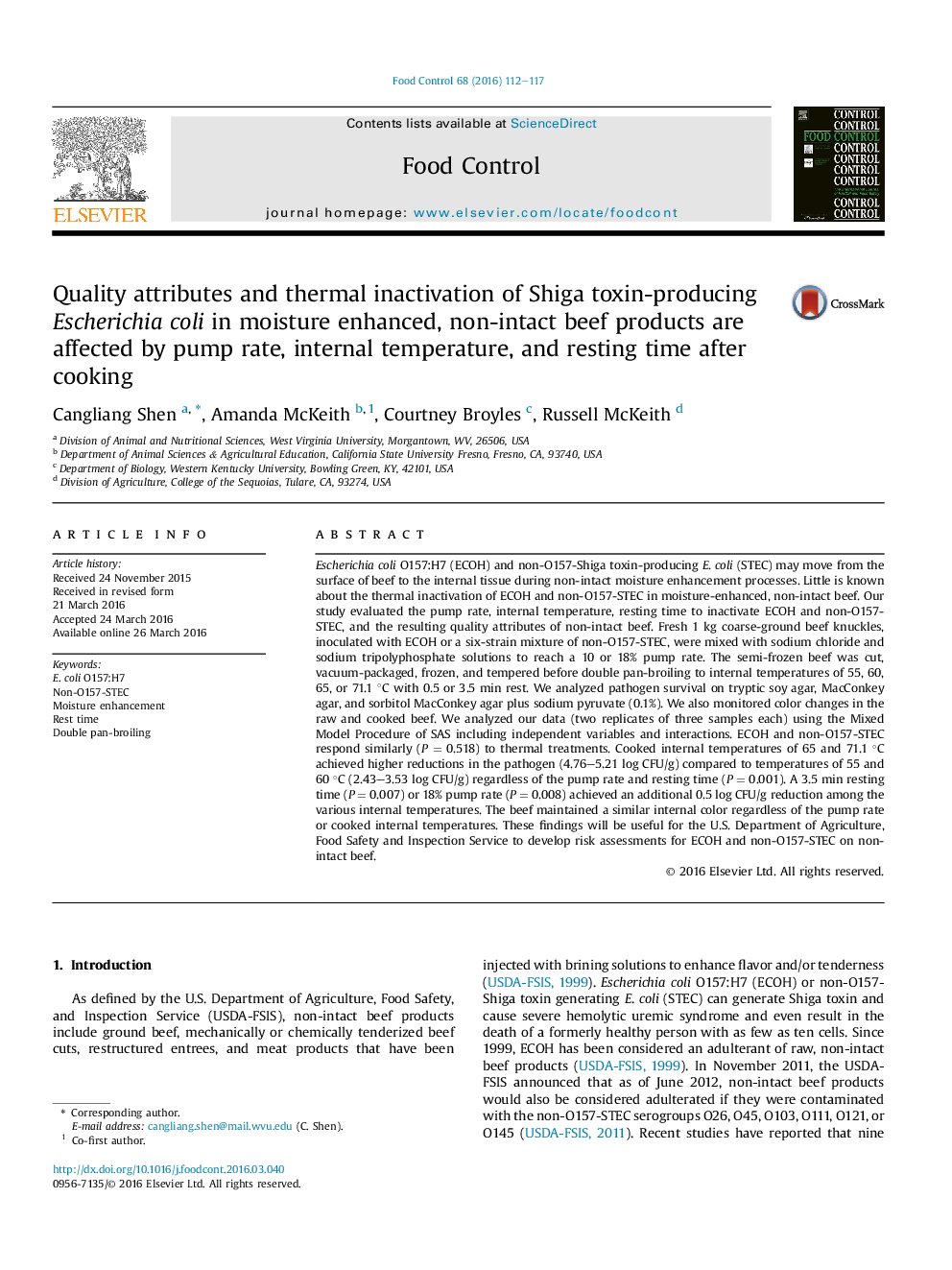| Article ID | Journal | Published Year | Pages | File Type |
|---|---|---|---|---|
| 4559030 | Food Control | 2016 | 6 Pages |
•E. coli O157:H7 or Non-O157-STEC behave similar to thermal treatment.•Cooking to 65 and 71.1 °C achieved higher pathogen reductions than 55 and 60 °C.•3.5 min resting time or 18% pump rate reached higher reduction (65 °C).•Doneness of cooked semi-frozen non-intact beefs cannot be determined by color.
Escherichia coli O157:H7 (ECOH) and non-O157-Shiga toxin-producing E. coli (STEC) may move from the surface of beef to the internal tissue during non-intact moisture enhancement processes. Little is known about the thermal inactivation of ECOH and non-O157-STEC in moisture-enhanced, non-intact beef. Our study evaluated the pump rate, internal temperature, resting time to inactivate ECOH and non-O157-STEC, and the resulting quality attributes of non-intact beef. Fresh 1 kg coarse-ground beef knuckles, inoculated with ECOH or a six-strain mixture of non-O157-STEC, were mixed with sodium chloride and sodium tripolyphosphate solutions to reach a 10 or 18% pump rate. The semi-frozen beef was cut, vacuum-packaged, frozen, and tempered before double pan-broiling to internal temperatures of 55, 60, 65, or 71.1 °C with 0.5 or 3.5 min rest. We analyzed pathogen survival on tryptic soy agar, MacConkey agar, and sorbitol MacConkey agar plus sodium pyruvate (0.1%). We also monitored color changes in the raw and cooked beef. We analyzed our data (two replicates of three samples each) using the Mixed Model Procedure of SAS including independent variables and interactions. ECOH and non-O157-STEC respond similarly (P = 0.518) to thermal treatments. Cooked internal temperatures of 65 and 71.1 °C achieved higher reductions in the pathogen (4.76–5.21 log CFU/g) compared to temperatures of 55 and 60 °C (2.43–3.53 log CFU/g) regardless of the pump rate and resting time (P = 0.001). A 3.5 min resting time (P = 0.007) or 18% pump rate (P = 0.008) achieved an additional 0.5 log CFU/g reduction among the various internal temperatures. The beef maintained a similar internal color regardless of the pump rate or cooked internal temperatures. These findings will be useful for the U.S. Department of Agriculture, Food Safety and Inspection Service to develop risk assessments for ECOH and non-O157-STEC on non-intact beef.
